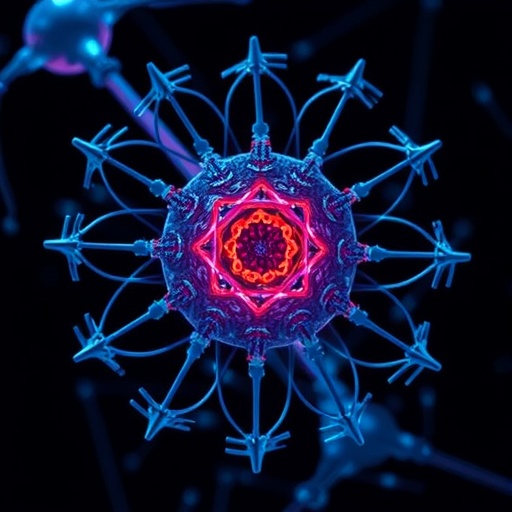In the evolving landscape of artificial intelligence, large language models (LLMs) are increasingly being positioned against the formidable expertise of multidisciplinary tumor boards. This intriguing comparison is not just a playful contest; it’s an ambitious attempt to assess the capability of AI in the realm of oncology, specifically focusing on how well these advanced systems can emulate human decision-making in the treatment of sarcomas. The study led by CP Li and colleagues paves the way for a deeper understanding of the implications of AI in medical settings, particularly in directing patient care and enhancing treatment outcomes.
The study was conducted against the backdrop of the ring trial, wherein 21 sarcoma centers provided a platform for benchmarking AI against seasoned professionals. As the biomedical community engages more with AI algorithms, many are left pondering: Can an AI outsmart a panel of human experts when faced with complex cancer cases? The idea of AI-driven diagnostics and treatment planning is not entirely new; however, this study represents a methodical investigation into its actual capabilities in real-world applications.
In this experimental setup, the researchers leveraged advanced algorithmic strategies inherent in LLMs, which are designed to interpret vast amounts of medical literature and patient data. By harnessing these sophisticated AI models, they aimed to replicate the decision-making processes typically executed by tumor boards, who often base their diagnoses and treatment recommendations on collective knowledge and experience. The delegation of such responsibilities to AI introduces fascinating possibilities and raises significant ethical questions.
One of the most striking revelations from this comparative study was not just the performance of LLMs in diagnostic accuracy, but how they processed information. Unlike human oncologists, who consider the nuances of patient history and context, AI tends to operate strictly on the data provided. This difference highlights a critical gap between AI capabilities and human faculties. AI’s potential lies significantly in its ability to analyze data patterns rapidly; however, it lacks the empathetic understanding and holistic view that seasoned oncologists bring to the table.
The results of the study indicated that while LLMs achieved commendable accuracy in some diagnostic domains, there were instances where their recommendations diverged from human consensus. Correlations between certain tumor characteristics and treatment efficacy were not as apparent to the AI as they were to human experts, revealing limitations in the way AI interprets innovative and dynamic medical scenarios. These disparities raise essential questions regarding the reliability of AI in oncology and the subsequent impact on patient care.
As healthcare systems worldwide gradually incorporate AI technologies, the findings from this benchmarking study can serve as a guiding light for future advancements. They underscore the necessity for a collaborative framework wherein humans and AI coexist rather than compete. In this envisioned future, the strengths of both can complement each other, leading to optimized treatment protocols and improved patient outcomes. Such a synergy may very well redefine clinical practices and therapeutic approaches in oncology.
Moreover, the researchers noted that transparency in AI decision-making processes will be crucial for gaining the trust of healthcare professionals. Developing an AI system that not only provides answers but also explains its reasoning is paramount. If oncologists can comprehend how an AI arrives at its recommendations, they are more likely to embrace its guidance. This goes beyond mere functionality; it’s about fostering a relationship where doctors feel empowered by AI assistance rather than threatened by it.
One of the areas ripe for further investigation arising from this study is how to enhance LLMs’ learning modalities. As algorithms continue to evolve, integrating experiential learning that includes patient interactions may be critical. Such advancements could enable LLMs to better understand context, subtleties, and patient-specific variables, bridging the divide between human intuition and machine logic. Investing in the convergence of machine learning and practical clinical application could significantly enrich the capabilities of AI in oncology.
The ethical ramifications of implementing AI in national healthcare frameworks are vast and require careful consideration. As AI systems take on more responsibility in clinical environments, issues regarding accountability, decision-making hierarchy, and patient confidentiality arise. This is especially pertinent in oncology, where treatment choices can be life-altering. Ensuring that AI complements rather than replaces human judgment will be essential in developing patient-centered practices.
As the biomedical arena moves towards incorporating AI models into daily practice, substantial work remains to be done in refining these technologies. The continuing development of more nuanced and capable language models could one day lead to remarkable advancements that parallel human expertise. The aim of achieving an inseparable partnership where AI augments human capability rather than competes with it is the ultimate goal.
The advancements observed in this research illuminate the importance of interdisciplinary collaboration, not just within medical teams but also amongst technologists, ethicists, and policymakers. As we venture into uncharted territories, the collective insights brought by varied professions will be indispensable in creating robust guidelines that govern AI usage in healthcare.
In response to the challenge presented by large language models, the oncology field is at a crossroads. The potential of AI is palpable, yet caution and thorough evaluation must accompany this enthusiasm. Only by striking a balance between embracing technological progress and safeguarding patient welfare can we ensure that AI contributes positively to the practice of medicine.
Ultimately, this research presents an intriguing glimpse into the future of healthcare, where artificial intelligence is integrated thoughtfully alongside human expertise. It serves as a reminder that while technology progresses at an astonishing rate, the essence of medicine—understanding, empathy, and nuanced decision-making—remains an irreplaceable component of patient care. The dialogue initiated by these findings will undoubtedly cultivate further exploration and refinement in the interplay between human and machine in oncology.
As the study unfolds, the implications for education, training, and the future workforce in medicine become increasingly clear. Preparing the next generation of oncologists to work alongside AI will be imperative. Education systems must evolve to equip future doctors with not just knowledge but also the skills needed to partner with technology effectively. This collaborative ethos will ensure that patient care remains at the forefront as new tools emerge.
In conclusion, the ambitious research conducted by Li, Kalisa, and Roohani opens up essential discussions on the intersection of AI and medical practice. The journey to harnessing the power of large language models in oncology is just beginning, with infinite potential ahead. However, the commitment to maintaining the compassionate essence of medicine must remain unwavering as we tread further into this transformative age.
Subject of Research: AI in Oncology Decision-Making
Article Title: The imitation game: large language models versus multidisciplinary tumor boards: benchmarking AI against 21 sarcoma centers from the ring trial.
Article References:
Li, CP., Kalisa, A.T., Roohani, S. et al. The imitation game: large language models versus multidisciplinary tumor boards: benchmarking AI against 21 sarcoma centers from the ring trial.
J Cancer Res Clin Oncol 151, 248 (2025). https://doi.org/10.1007/s00432-025-06304-9
Image Credits: AI Generated
DOI: 10.1007/s00432-025-06304-9
Keywords: Artificial Intelligence, Oncology, Large Language Models, Tumor Boards, Sarcoma, Patient Care, Medical Ethics, Collaboration, Machine Learning
Tags: advanced algorithmic strategies in medicineAI in OncologyAI-driven cancer diagnosticsbenchmarking AI against human expertsevaluating AI capabilities in cancer treatmentimplications of AI in healthcarelarge language models in medicinemultidisciplinary tumor board effectivenesspatient care enhancement through AIreal-world applications of AI in oncologysarcoma treatment comparisontumor board decision-making





